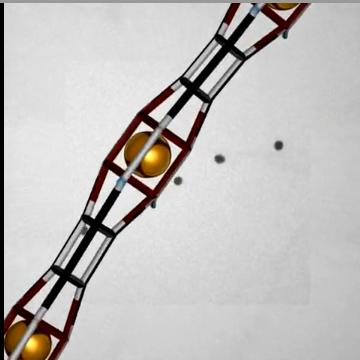The research is based on "extracting" the biological content of the DNA so that instead of carrying the genetic code for life, it becomes like a box for tiny objects of nanometer size

A team of researchers from the Department of Chemistry at McGill University in Canada achieved an important breakthrough in the development of nanotubes - "magic bullets" that could one day deliver drugs to specific infected cells. The research is based on "taking out" the biological content of the DNA so that instead of carrying the genetic code to life, it becomes like a box for tiny objects of nanometer size.
Using this method, the team created the first examples of DNA nanotubes that carry a charge inside, transport it and release it immediately and completely when an external DNA strand is added to the system. The diameter of one of these DNA structures is a few nanometers, but it may reach a long length of about twenty thousand nanometers.
To date, DNA nanotubes have only been produced by rolling two-dimensional sheets of DNA into a cylinder. With the innovative method of this research team, it is possible to obtain nanotubes in various shapes and they can be blocked or porous in order to store materials in the content and release them at the desired time. In this situation, substances such as drugs can be selectively released when a particular cell is present. One of the possible future applications of this discovery is the treatment of cancer.
"However, we are still very far from the moment when we can treat diseases using this technology; Our research is another step in the right direction. "Researchers need to learn how to take these DNA nanostructures, like our nanotubes, and bring them back to the field of biology to solve problems in nanomedicine, from drug delivery to tissue engineering and building biosensors," explains the lead researcher.
The research findings were published this month in the scientific journal Nature Chemistry.

2 תגובות
"and release it immediately and completely when an external DNA strand is added to the system"
A fascinating idea, but the article does not describe how the tube reaches the right point and what causes it to fully release its contents